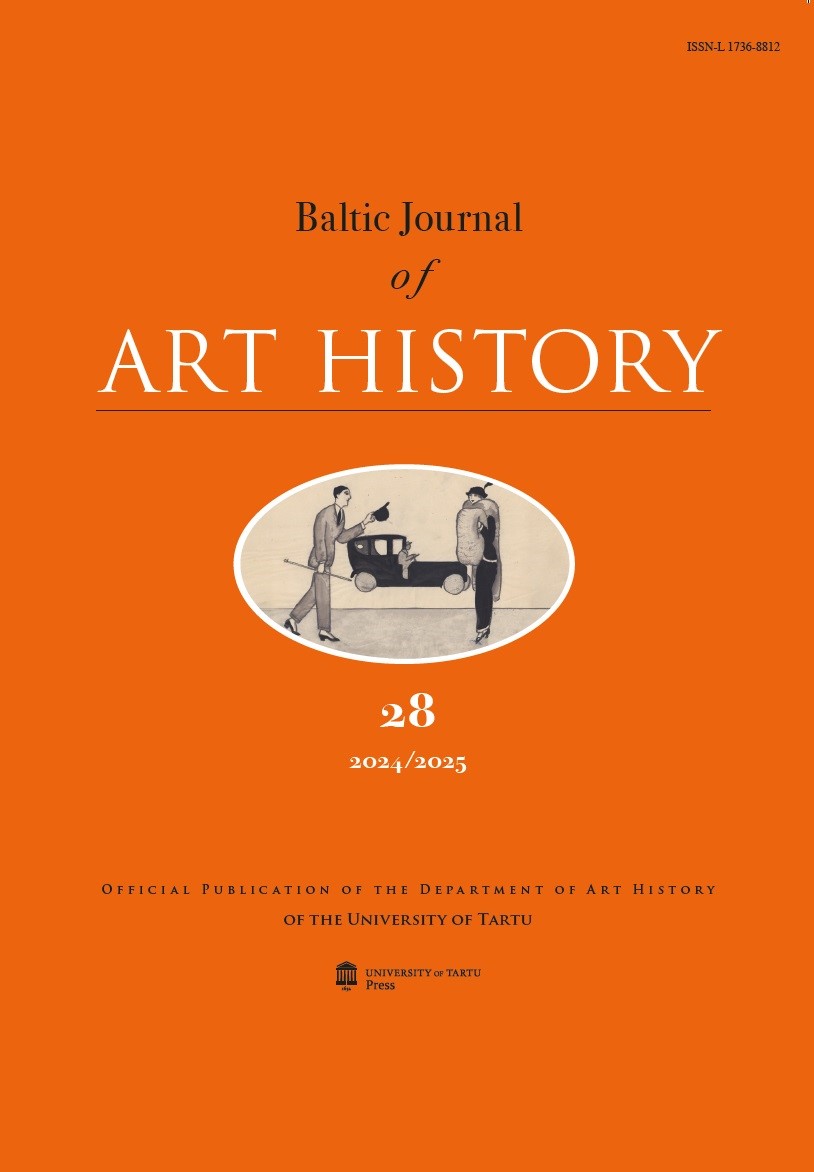Latvian Artists and Flâneurism in Europe in the Early 20th Century: The Example of Gustavs Šķilters and Jāzeps Grosvalds
DOI:
https://doi.org/10.12697/BJAH.2025.28.05Keywords:
Flâneurism, European metropolises, Gustavs Šķilters, Jāzeps Grosvalds, modernismAbstract
The article focuses on two Latvian artists who can be associated in
different ways with the notion of flâneurism at the beginning of the
20th century – Gustavs Šķilters and Jāzeps Grosvalds. The two artists,
in parallel with the visual heritage they created, also left written
testimonies of their experiences while staying in various European
metropolises, among which Paris was of a special importance, as
both resided there for a considerable amount of time. It is important
to examine these artists’ first-hand experiences based on written
sources as well as visual art testimonies that allow us to track their
journeys and habits in large modern cities. Latvian culture and art
history have not so far examined the visual and written heritage left
by the two artists in the context of flâneurism, so it is particularly
important to look at their observations of the great cities of Europe.
The written and visual heritage left by both artists allows us to
associate them with the concept of flâneurism, as both were drawn
to long, leisurely walks through cities, observing the surrounding
modern life and the relationships between the individual and the city,
analysing and recording them, evaluating society and commenting
on social phenomena. The attitude of Gustavs Šķilters and Jāzeps
Grosvalds towards the modern city, the way of expression and the
vocabulary they used are different. In his texts Šķilters tends to
romanticise what is observed, conjuring up living scenes before the
reader’s eyes. He also seeks to distance himself from the image of the
flâneur; for him the flâneur is an interesting object of observation, a
characteristic, inseparable phenomenon of Paris. Jāzeps Grosvalds,
on the other hand, genuinely embodies the image of the flâneur,
despite his dandyism, which manifested itself most vividly in the
early years. In Grosvalds’ art, which gradually develops and leads
him to the title of the founder of Latvian modernism, becoming one
of its most significant representatives, there is much more frequent
use of the images of people in the urban environment, and he proves
his ability to perceive the essential in every situation he experiences.
Gustavs Šķilters and Jāzeps Grosvalds fit into the general pattern of
observers and describers of modern cities in the early 20th century
and can be analysed in the context of flâneurism, which is the main
goal of this article. Since this is the first study to deal with Latvian
artists from this perspective, its research should undoubtedly be
continued, including not only the two artists considered here, but
also other artists and their visual and literary legacies.

